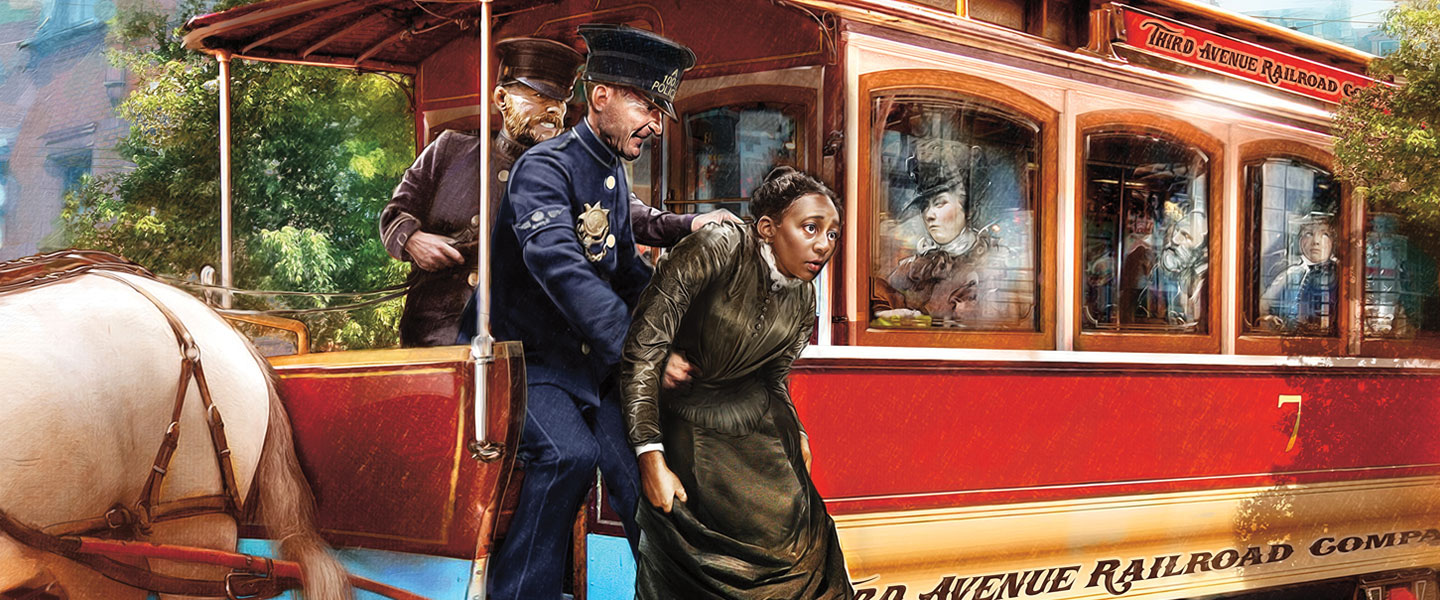
The only known photograph of Jennings, later in life
It is a story that most Americans know by heart: In a city where black people suffer the daily humiliation of segregation, an African-American woman stands her ground. One day, she defies the rules that separate blacks from whites on public transportation. Her act of resistance leads to changing those rules for good.
Who was that woman? Most of us would automatically think of Rosa Parks of Montgomery, Alabama. In 1955, her refusal to give up her bus seat to a white person led to a campaign to desegregate Montgomery’s buses and helped spark the civil rights movement of the 1950s and ’60s (see “1955: Rosa Parks,” below).
But this drama took place in New York City a full century before Parks’s protest. There, in 1854, 27-year-old Elizabeth Jennings refused a conductor’s command to get off a streetcar where white passengers were riding. After she was forced off that car, she sued the streetcar company and won.
You may not have heard of Elizabeth Jennings. And yet, “her case was the one that helped break the back of segregation in New York,” says Amy Hill Hearth, the author of a new book about Jennings called Streetcar to Justice. Jennings was, historians say, one of the first civil rights heroes in American history.






